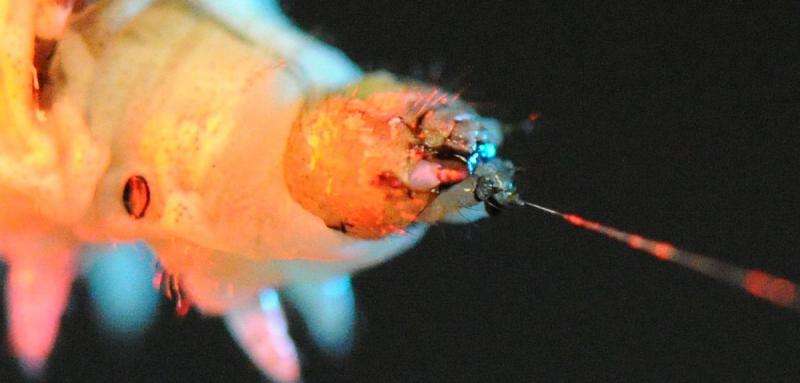Learning from nature's silky skills

Why have we never been able to manufacture fibers as strong and tough as the silks spun by silkworms and spiders?
A research team from the University of Oxford and the College of William and Mary, Virginia has taken an important step to understanding why we still trail behind nature.
Artificial silks have improved greatly in recent years. As fully biological materials, they perform well in medical applications, such as artificial cartilage. They are also more sustainable than the synthetic plastics they replace, not being based on oil and requiring little energy and no toxic substances for their production. Yet for all its promise as a next-generation biomedical and engineering material, artificial silk has limits, failing to show the strength of its natural counterparts.
Now, a research team from the University of Oxford and the College of William and Mary, Virginia has taken an important step to understanding why we still trail behind nature. Their findings take us closer to finding better methods for processing synthetic silks.
The most common way to process artificial silk involves dissolving silkworm cocoons. The team used atomic force microscopy to compare silk produced this way with natural silk.
The research team found that when natural silks are spun, they begin to assemble by first forming tiny fibrils. The microscope, which is powerful enough to show individual molecules, revealed that the fibrils are 20 -25 nanometers wide, or about 16 million times thinner than a human hair. These tiny fibrils are a crucial part of the formation of natural silk, contributing to its strength and toughness.
By contrast, the team found that creating artificial silk through dissolving the cocoons inhibited the formation of the fibrils. This helps explain why we have never manufactured a silk with the properties of the original.
Professor Fritz Vollrath, who led the team at Oxford's Department of Zoology, said: 'Until now, we haven't really understood why we cannot make a silk as good as those found in nature – we are using natural materials, after all. Our findings suggest that artificial silks cannot be considered true silks, as they do not have the tiny nanofibres we discovered in nature. This kind of analysis, using atomic force microscopy has not been done before. We feel it could be a useful tool in the development of new artificial silks, with potential benefits for medicine and engineering.'
The team's findings have just been published in the journal Biomacromolecules.
More information: "Silk Reconstitution Disrupts Fibroin Self-Assembly." Biomacromolecules, Article ASAP. DOI: 10.1021/acs.biomac.5b00732
Journal information: Biomacromolecules
Provided by Oxford University





















